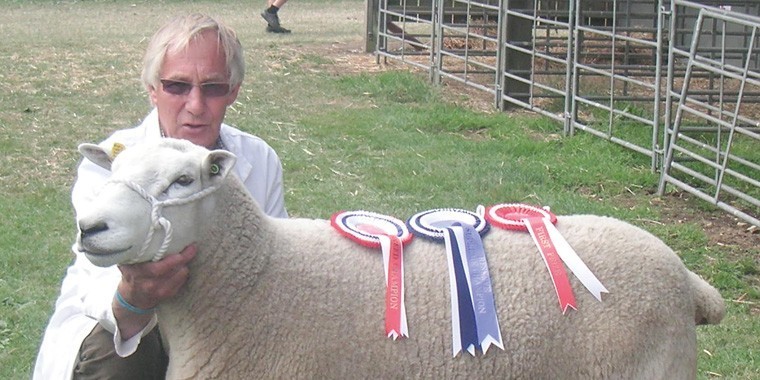There were three new cases identified last month (August) more than a year since the first identified case in the current outbreak on the 23 August 2015. On the positive side with the most recent cases in central and eastern France the disease has not made any further progress towards the Channel coast of France. But at about 70 miles, the existing buffer between the nearest restriction zones and the coast is still too close for comfort, particularly as the potential risk of the disease crossing the Channel over the next couple of months remains at 80%.
All of the sheep that I intend keeping on the holding into next year have now been vaccinated, or at least have had their first sensitising dose of vaccine and should, by the time this goes to press, have had their second dose and be fully protected. At £1.50 per dose it is certainly not a cheap vaccine, but I know that my ewes and rams will be protected over the tupping period and during the critical stage of early pregnancy. During the last outbreak a significant number of flocks, particularly going into 2008/2009 season, had their lambing percentages decimated as a result of infection during tupping and early pregnancy.
By my calculations £3 for a double dose (this year, only one booster dose if vaccination is required next year) equates to a little over four per cent of a lamb at £70 per lamb. For a flock averaging 150% lambing, preventing a drop in lambing percentage of little over 2.5% would cover the cost of the vaccine per ewe. Is it worth it? Who knows? It’s a little bit like insurance, which always seems very expensive and you frequently question how necessary it is until you actually need it.
The time for decision making on bluetongue vaccine is rapidly approaching. The predicted high risk window is late summer and early autumn, which sadly coincides with the most critical time in the sheep producers’ calendar. Having had no exposure to bluetongue and no vaccination for a number of years the current national sheep flock has an infinitely low level, if any, of immunity to the disease – hence the need for a double dose of vaccine three weeks apart, with full immunity developing some six weeks after the first vaccination.
As a result ewes treated now should be at peak immunity levels and fully protected when my tups go in during early October. I know a number of producers who have already vaccinated and according to my vet there has been a reasonably high level of demand for vaccine. If you are in any doubt talk to your vet, now. If bluetongue does cross the Channel demand for vaccine will escalate very quickly and available supplies may simply not be adequate to cope with increased demand.
On a recent short stay in Le Crotoy on the Baie de Somme, it was interesting to see their pre sale (salt marsh) lamb, a popular and much sought after meat in France. On the salt marsh grazings of the Baie de Somme some 5,000 pre sale lambs are produced each year. The lambs come from a number of local producers and spend two to three months after weaning on the salt marsh, looked after by one shepherd and his dogs.
To qualify for the appellation d’origine contrôlée (AOC) status lambs must be from a limited number of acceptable breeds (which include the Suffolk) and must spend at least two and a half months on the salt marshes before they are slaughtered. Lambs are generally available only between the months of July and February with the summer being the peak season.
The main job of the shepherd is to control the movement of lambs over the marshes in relation to the tides with lambs being moved closer inshore at high tide or off the marshes completely at very high tides. A lot of fuss, with a lot of shepherding, so is it worth it? Almost certainly yes, with leg of pre sale lamb retailing at €30 per kilogram, shoulder €24 per kg and neck selling at €16 per kg, the latter the same price as ordinary French lamb in the supermarket.
Production is very well regulated and very well marketed through local cooperatives but it does generate a significant premium. Could we do it here? Yes and no: there is limited salt marsh lamb produced in the UK, but not as well regulated, not as well marketed and, sadly UK consumers are, in general, probably not sufficiently discerning to pay the sort of premiums the pre sale producers enjoy across the Channel. The French do enjoy their food and will pay for quality; sadly I feel that home supermarkets have, on the whole, led a decline into mediocrity of the eating habits of the average UK consumer.




